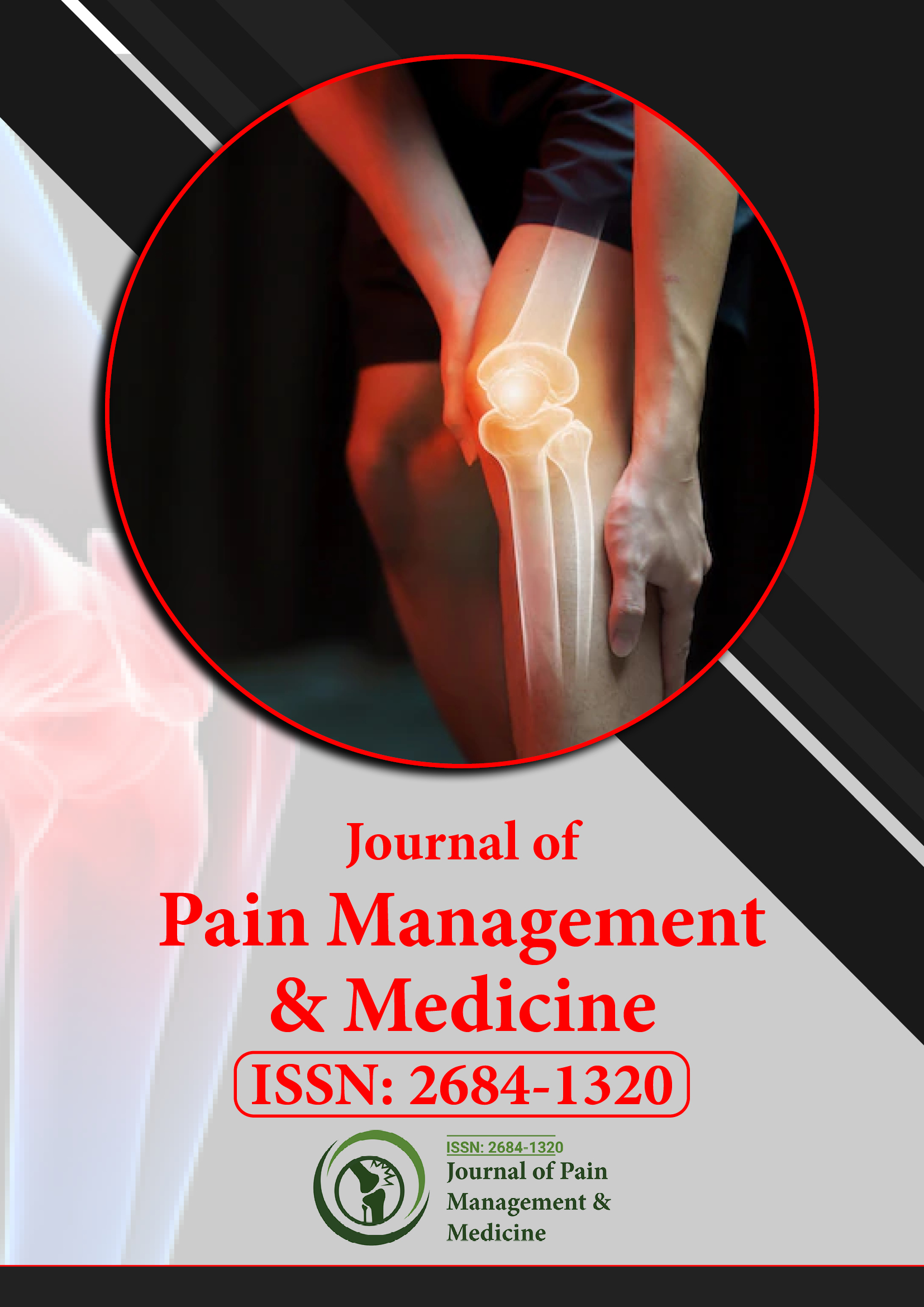Indexed In
- RefSeek
- Hamdard University
- EBSCO A-Z
- Publons
- Euro Pub
- Google Scholar
- Quality Open Access Market
Useful Links
Share This Page
Journal Flyer

Open Access Journals
- Agri and Aquaculture
- Biochemistry
- Bioinformatics & Systems Biology
- Business & Management
- Chemistry
- Clinical Sciences
- Engineering
- Food & Nutrition
- General Science
- Genetics & Molecular Biology
- Immunology & Microbiology
- Medical Sciences
- Neuroscience & Psychology
- Nursing & Health Care
- Pharmaceutical Sciences
Perspective - (2025) Volume 11, Issue 2
Personalized Pain Management Strategies Based on Quantitative Sensory Testing Profiles in Patients with Fibromyalgia
Liya S. Mehra*Received: 01-Mar-2025, Manuscript No. JPMME-25-28854; Editor assigned: 03-Mar-2025, Pre QC No. JPMME-25-28854 (PQ); Reviewed: 17-Mar-2025, QC No. JPMME-25-28854; Revised: 24-Mar-2025, Manuscript No. JPMME-25-28854 (R); Published: 31-Mar-2025, DOI: 10.35248/2684-1320.25.11.322
Description
Fibromyalgia (FM) is a complex chronic pain disorder characterized by widespread musculoskeletal pain, fatigue, sleep disturbances, and cognitive 1 dysfunction. The heterogeneity of symptom presentation and treatment response in FM highlights the need for more personalized management strategies. Quantitative sensory testing (QST), a battery of psychophysical tests that assess the function of different somatosensory pathways, has emerged as a valuable tool for characterizing the individual pain profiles of FM patients. By objectively quantifying sensory processing abnormalities, QST offers the potential to guide the selection of more targeted and effective pain management interventions. A focus on personalized strategies based on QST profiles offers a promising avenue for improving outcomes in this challenging patient population.
One crucial perspective is the identification of distinct QST-defined subgroups within the broader FM population. Studies have consistently demonstrated that FM patients exhibit diverse patterns of sensory abnormalities, including widespread hyperalgesia (increased pain sensitivity to noxious stimuli), allodynia (pain evoked by normally non-noxious stimuli), and impaired pain modulation. QST can help to categorize patients based on their predominant sensory processing dysfunctions, such as enhanced central sensitization, small fiber neuropathy, or altered descending pain inhibitory pathways. Identifying these subgroups is a critical first step towards personalized treatment, as different underlying mechanisms are likely to respond differently to specific interventions.
Another vital perspective involves linking specific QST profiles to the likely efficacy of different pharmacological and non-pharmacological treatments. For instance, patients exhibiting pronounced evidence of central sensitization might benefit more from medications targeting central nervous system mechanisms, such as Serotonin-Norepinephrine Reuptake Inhibitors (SNRIs) or certain anticonvulsants. Conversely, patients with QST profiles suggestive of peripheral small fiber dysfunction might respond better to treatments addressing neuropathic pain. Similarly, non-pharmacological interventions like exercise therapy, cognitive behavioral therapy, or specific physical modalities might be more effective in certain QST-defined subgroups. Research is needed to establish these predictive relationships through well-designed clinical trials that stratify patients based on their QST profiles and assess their response to various treatments.
The longitudinal monitoring of QST profiles in response to treatment offers a valuable perspective on the effectiveness of personalized strategies. Serial QST assessments can provide objective measures of changes in sensory processing over time, allowing clinicians to track treatment response and adjust interventions accordingly. For example, if a patient with initial evidence of central sensitization shows a normalization of their QST profile following a specific medication, this could support the continued use of that treatment. Conversely, a lack of change or worsening of the QST profile might indicate the need to explore alternative strategies.
From a mechanistic perspective, integrating QST findings with other diagnostic modalities, such as neuroimaging and genetic analyses, could provide a more comprehensive understanding of the underlying pathophysiology of pain in different FM subgroups. Identifying specific neural correlates or genetic markers associated with distinct QST profiles could further refine our understanding of the disease and potentially lead to the development of even more targeted therapies.
The practical implementation of QST in routine clinical practice is an important consideration. While QST is a valuable research tool, its widespread adoption in clinical settings may be limited by factors such as time constraints, equipment costs, and the need for specialized training. Future efforts should focus on developing more streamlined and clinically feasible QST protocols that can be readily integrated into pain management clinics.
Finally, considering the economic perspective, demonstrating that personalized pain management strategies guided by QST profiles lead to improved treatment outcomes and reduced healthcare utilization (e.g., fewer hospitalizations, fewer specialist referrals) would provide a strong rationale for investing in the infrastructure and training needed to implement this approach. Cost-effectiveness analyses comparing QST-guided treatment with traditional empirical approaches are warranted.
In conclusion, personalizing pain management strategies for fibromyalgia based on quantitative sensory testing profiles holds significant promise for improving treatment outcomes in this heterogeneous and often challenging condition. By identifying distinct sensory processing abnormalities, linking these profiles to treatment responses, monitoring changes longitudinally, and integrating QST with other diagnostic modalities, we can move towards a more targeted and effective approach to managing pain and enhancing the quality of life for individuals living with fibromyalgia. Overcoming the practical challenges of implementing QST in clinical practice and demonstrating its economic value will be crucial for realizing the full potential of this personalized approach.
Citation: Mehra LS (2025) Personalized Pain Management Strategies Based on Quantitative Sensory Testing Profiles in Patients with Fibromyalgia. J Pain Manage Med. 11.322.
Copyright: © 2025 Mehra LS. This is an open access article distributed under the terms of the Creative Commons Attribution License, which permits unrestricted use, distribution, and reproduction in any medium, provided the original author and source are credited

